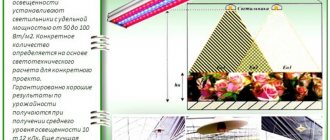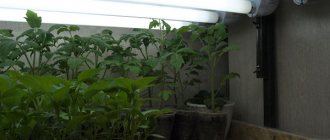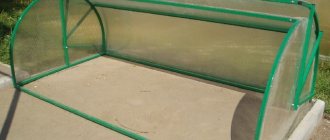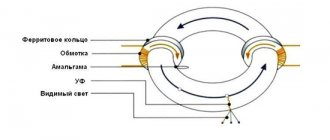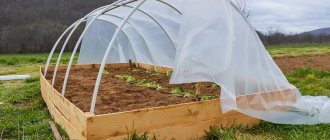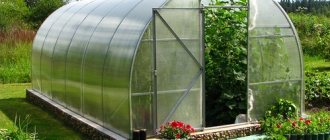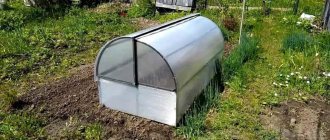Every owner of a country plot wants to see it as original and cozy as possible. However, many landscape design ideas, despite all their attractiveness, have long been outdated and have become commonplace. It’s difficult to surprise with an alpine slide. But a flower bed-clock made of flowers will not only be the highlight of the site, but will even allow its owners to navigate in time!
Botanical description
Field carnation (Dianthus versicolor) belongs to the category of herbaceous perennials. It belongs to the carnation family, the genus carnation.
Its numerous stems grow from 30 to 50 cm in height. The leaves of the carnation are opposite, entire, linear-lanceolate in shape.
The flowers of this species are the model for plants of this genus and family. They are localized one at a time on the very top of the shoots. They have four sepals, jagged petals, pink-purple in color with a greenish outer side. The fruit of the field carnation is also typical - it is a small multi-colored box.
Common names for cloves
This plant, most likely due to its prevalence, has many different names.
Its popular name is represented by the following options.
- Watch. This is how the carnation was named by observant people who noticed that the pink flower closes at night and during periods of bad weather. This brings good water savings to the small plant: after all, insects still don’t come at night and in the rain.
- Spark, dawn. These names of the field carnation do not need any comments: the flower among the greenery is bright, like a spark from a fire or like the rising sun.
- Wild soap. This is what this plant is sometimes called by those who know that its roots are capable of producing foam.
- Field tear, maiden grass. These lyrical names reflect the attitude towards small, thin and beautiful grass as a girl who trusts her innermost thoughts only to plants.
- Multi-colored carnation. This name comes from the plant's ability to produce flowers of different colors.
Habitat and places of growth
This plant is a typical inhabitant of temperate climate areas of Eurasia with predominant vegetation in the form of deciduous or mixed forests. In addition, it feels good in forest-steppe conditions and motley grasses of wet steppes.
The name of the field carnation comes from the place where it grows. It is a typical meadow perennial, growing in fields as a weed and also in non-boggy meadows.
Meadows are a kingdom of grasses with a developed root system, rhizomes, bulbs, tubers and other devices that allow the plant to take over space and keep it from other species.
Thanks to the rhizomes, the flower can quickly grow back after damage and prevent other plants from entering the conquered territory. It is with this strategy that the carnation forms carpets of pink blooms or contributes its color to the meadow variety of bright flowers.
Field carnation is very resistant to haymaking and grazing, but does not tolerate fires and trampling. For this reason, it is part of the grass stand of forest glades and treeless dry areas where hay is cut and cattle are grazed, but disappears from areas where many people walk and frequent burning takes place.
FOR EVERY TASTE
There are more than 27 thousand registered varieties of carnations in the world. In the conditions of central Russia, garden forms of winter-hardy species are cultivated in rock gardens. Their flowers are usually white, pink, magenta or purple. However, there are exceptions, for example Knapp's clove. It is distinguished by its bright yellow color and adapts well to our conditions. Garden carnations are grown in greenhouses for bouquets. She comes from the Mediterranean, and her wild ancestors are still found in nature today - in Greece and Italy. And if suddenly an ordinary resident of Russian fields, the carnation grass, takes a fancy to your plot, do not weed it out. It will incredibly aesthetically complement an array of herbs: thyme and sage. Varieties of Turkish carnation, which reproduce by self-sowing, look good in flower beds, and in borders through seedlings, the beloved Shabot carnation is grown as an annual plant.
Carnation in landscape design
This plant blooms profusely for 3 months - from June to August. Moreover, it is capable of forming a continuous carpet of flowering grass, where even green leaves are not visible behind the pink flowers. The photo clearly shows how you can use this wonderful property of wild carnations. In addition, using this plant as a basis, you can create a composition of meadow herbs, combining pink carnation flowers with blue cornflowers, white daisies, etc.
Field cloves can be grown either from seeds or by transplanting an adult plant. Like every meadow rhizomatous plant, it quickly recovers from root injury. The main thing is to provide the plant with favorable starting conditions at first.
Field carnation loves dry soils. That is why it needs to be planted in sunny, well-warmed and drained areas. The soil should be loose, neutral or slightly alkaline, fertile, but not heavy. If the soil in which you would like to plant cloves does not have these characteristics, then you must:
- before sowing, mix the soil with sand;
- add plant organic matter (grass, leaves, straw);
- place a small layer of humus mixed with leaves or grass on the top of the bed;
- pave drainage with pebbles if necessary.
It is better to plant adult specimens with rhizomes in the fall - in September or early October. The main thing in this case is to calculate the time so that the plants have time to take root, but do not begin to actively vegetate. You can replant in the spring, but then there will be no flowers this year.
It is better to sow seeds only in spring. Of course, this can be done in the fall, but then there will be a danger of seeds germinating before winter, for example, during a long late autumn. Such sprouts may not survive freezing temperatures.
But the clock is not just ticking. They are blooming! Top 5 most beautiful flower watches
Authentic flower clocks - plants planted in the shape of a dial that bloom at different times of the day - look like a real miracle. Due to the complexity of implementation, a miracle is very rare.
Therefore, another option is widespread all over the world - ordinary clock mechanisms decorated with growing flowers. Only very big ones. In fact, these are original flower beds.
Flower clock in Zurich
"Flora's Clock" and its ancestors
People have known for thousands of years that different flowers open and close at certain times during the day. This knowledge served as the basis for the creation of the first flower clock. They were planted in Ancient Greece, Rome, Egypt, in the East...
Unfortunately, plant compositions are not stone structures; they could not survive to this day; they disappeared along with civilizations. Today we can only imagine the flower clocks of the Ancient World.
It is not known for sure whether there were flower clocks in the Hanging Gardens of Babylon - one of the 7 wonders of the world. But it's very likely. After all, gardens were created by the best engineers, mathematicians, astronomers and gardeners of their time
The second wave of interest in these living structures began after the creation in the middle of the 18th century by the Swedish botanist Carl Linnaeus of the “Clock of Flora” - that’s what the scientist called his flower clock. For many years he observed the physiology of plants - the opening and closing of flowers, systematized the knowledge gained and implemented it on the basis of the botanical garden in the city of Uppsala.
Linnaeus's students and followers developed the theme he began, and over the years the original list of five dozen flowers grew many times over.
You can use this list as a guide for creating your own “Flora Clock” on your site. It is available on the Internet in many versions, because we must take into account that the opening and closing times of flowers vary depending on latitude and longitude.
Of course, the flower clock does not show absolutely accurate time; rather, it is a visual aid for botanists, nature lovers, and an example of original landscape design.
One of the available options is to organize a large flower bed, dividing plants into sectors with different blooming and “falling asleep” times. You can complement the composition with a clock mechanism.
One of the variants of Linnaeus's clock. The round flowerbed is divided into 12 sectors. The design is complemented by a gnomon - a vertical element of a sundial
Variant of flower clocks in the form of flower beds
And if you want to make an original gift of flowers - a flower clock, order a small floral arrangement-design with the same principle to the florists.
Shadow or decorative arrows. What's better?
You can create a very original flowerbed design if you use a gnomon. A gnomon is a tall stick or piece of reinforcement from which a shadow will be cast. In order to install it, you need to mark a circle that is well illuminated by the sun. It is easy to determine such a place using a compass. The best time to carry out work is noon.
At this time, the sun should be located at the top of the dial of the improvised clock. The gnomon is installed in the center of the circle with a slight inclination to the north. The shadow cast from the column will show the time of day. In the place where the shadow intersects with the circle, it is necessary to mark the number 12. Then we mark the dial with a time interval of one hour. After the last mark is made, this part of the work can be considered completed. Then sectors are marked from the marks, which are filled with plants.
The shadow arrow can be made from a piece of reinforcement or wood. Here it is a matter of taste of the owner of the site.
At first glance, the proposed options for creating a flower bed-clock seem difficult to implement. But this is not entirely true, since plants act as decoration. Here you can use your own imagination. We are confident that the end result will be very interesting. Other examples of unusual flower beds can be found here.
Whose flower clock is the best?
Unfortunately, Linnaeus's original flower clock has also not survived to this day. But today, cities around the world are trying to outdo each other in the originality of execution, scale and beauty of their flower clocks.
It is impossible to realize 100% the idea of having some flowers open every hour while others close. Therefore, flower clocks are supplemented with mechanical elements, recently electronic ones, sometimes with gnomons, but also more for beauty.
It’s difficult to even say exactly how many similar structures there are now on the planet. New ones are constantly opening: both in capitals and small towns. Flower clocks become local symbols, residents are proud of them, and tourists love to photograph them.
We present the top 5 most beautiful and interesting flower watches in the world.
Swiss watch in floral design
Many cities in Switzerland - the land of clocks and home of the Flora Clock - are decorated with magnificent floral clocks. The Swiss often help install similar structures in other countries and share ideas and experience.
Some of the most complex in technical execution and very beautiful in design are located in Geneva, in the English Park.
The title “precise as a Swiss watch” obliges. The design is equipped with a mechanism with a second hand, which is a rarity for flower watches. More than 6,500 plants are used to maintain their presentable appearance, and the composition changes with different seasons.
Features of plant biorhythms
All plants “live” according to certain biological rhythms. Depending on the weather, light and time, flower buds can either open or close.
The approximate biological rhythm of plants, which was used by Carl Linnaeus to form a flower clock, can be found in the table:
| Approximate time, in hours | Name |
| Blooming | |
| 3-5 | Yellow inflorescences of meadow salsify open |
| 4-5 | The bright rosehip flowers “wake up”, and the soft blue petals of chicory also bloom |
| 5 | Opening time of holostem poppy, meadow thistle |
| 5-6 | Officinalis dandelions are blooming, and a three-parted row is also opening its bright yellow bud. |
| 6 | The umbrella hawk opens its solar petals |
| 6-7 | Blooming time of the hairy hawkweed |
| 7 | The cuckoo's tears open their bright blue buds, and the white water lily and seed lettuce also open in the morning sun |
| 7-8 | Scarlet or blue-black petals of anagallis and small multi-colored mesembryanthemum daisies open |
| 8 | Time for bindweed to bloom |
| 9 | Orange-fiery calendula and carnation open their marigolds |
| 9-10 | A soft pink torichnik blooms |
| 18 | Geranium opens its petals |
| 20 | The orange daylily opens and exudes a bright aroma. |
| Closing | |
| 9-10 | Salsify closes its petals |
| 10 | The blue petals of common chicory close, and with them the lettuce goes to sleep |
| 10-11 | Field day closing time |
| 11-12 | The weed, field sow thistle, closes its yellow umbrellas |
| 12 | Field calendula closes up |
| 13 | The offspring and field carnation hides its petals |
| 13-14 | The umbrella hawk closes its “marigolds” |
| 14-15 | Time of bud closure of the steppe hawkweed |
| 15-16 | Branched corolla and torichnik hides white petals |
| 17 | Blue forget-me-nots and white water lilies are getting ready for bed |
| 17-18 | Hollow-stemmed poppies close their buds |
| 19-20 | The rosehip folds its petals |
| 20-21 | Closing time for fragrant tobacco and meadow slumber |
| 21-22 | Dandelion and night-flowered gum close their bud |
Each flower contains 2 phytochrome pigments, which are constantly changing. When sunlight is absorbed, one pigment is transformed into another, and when night falls, everything repeats in the reverse order. This is how the plant “determines” the actual time of day.
Attention! The conditions under which a flower is kept have virtually no effect on its biological clock. Even in a dark room, the opening of the bud will occur exactly in the period of time in which it should open in daylight.
The closing and opening times of the buds may vary, depending on several factors:
- The region in which the plant grows. Flowers adapt to the position of the sun at a certain latitude.
- Weather. On a cool and rainy day, many flowers remain closed.
- Insects. If the plant has already been pollinated, the bud will close earlier. And if not, later, since it will “wait” for the pollinator.
This should be taken into account when creating a flower clock on the site and selecting plant varieties for the dial.
The hottest
In Abu Dhabi (UAE), flower clocks are “adapted” to local conditions - they can withstand temperatures above 40 degrees Celsius and do not fade. What resources are used to maintain such beauty... is the secret of the developers.
Blooming desert of Abu Dhabi. Local flower clock
The Edinburgh Flower Clock has been running for almost 120 years.
The world's oldest still-functioning flower clock is located in Edinburgh, Scotland. They opened back in 1903.
Today we are fed up with beautiful views, but for its time the Edinburgh clock became a real breakthrough. They still maintain one of the best brands.
Flower clock: every flower has its time!
Author: Olga · Published 05/26/2019 · Updated 05/26/2019
In the modern world, everyone is accustomed to using gadgets and devices to keep track of time. But in the 18th century, a Swedish scientist invented an unusual way to check the time - a flower clock, which was also used to determine the weather forecast.
We will provide a list of the plants of the scientist Carl Linnaeus, on the basis of which he compiled his clock, as well as the factors influencing the opening or closing of the buds. With the help of our article, a gardener will be able to independently create an original flower bed “Flower Clock”.
Each flower has its own biorhythm - the plant opens and closes its buds at a certain time.
If you pay attention to some features of plants, you can determine the time by colors. This was first proven by the Swedish botanist Carl von Linnaeus (1707-1778). The scientist observed flowers and discovered that plants bloom at the same time of day or night .
The scientific observation, called the “Flora clock” or “flower clock” , was carried out by the naturalist in 1745 in the Uppsala Botanical Garden. It was a round flowerbed in the shape of a clock face, divided into 12 sectors in which flowers opened at a certain period of time. Thus, Carl Linnaeus created a natural clock by which he could determine the exact time.
Flower clock of Carl Linnaeus
According to legend, the Swedish naturalist liked to surprise guests with the following ritual: if Carl Linnaeus wanted to drink afternoon tea, the scientist first looked out of the window of his office into the garden at the flower clock. Depending on which sector the buds were open, he calculated the time and invited everyone to the table at exactly five o’clock, which aroused the admiration of the visitors.
What you need to know about composition biorhythms
Here is a table that Linnaeus developed.
Here we see that each plant has its own biorhythms. It is these that need to be taken into account in order to make our flower bed from flower arrangements. Having determined the time when the inflorescences open and close, you can “set” the time on the clock.
As we have already said, the shape of the flower bed can be different depending on your taste. However, it is easiest to stick to the form proposed by Linnaeus. Otherwise, you will have to conduct your own observations of the plants, and this is a long process.
Therefore, we will still focus on a round shape, which will have separate modules filled with plants. There will be twelve sectors in our flowerbed. Each sector will correspond to a time period of 60 minutes.
One more point that needs to be clarified. As we can see, the table contains ordinary wildflowers. Most likely, you will have a desire to replace them with decorative flowering plants. Therefore, you still have to watch their biorhythms.
It is also necessary to take into account the fact that the biological clock of plants may differ in different regions. Therefore, it is best to select certain plants and observe them before starting work on the original flowerbed. And then make your own sign, which you will use when creating similar flower beds.
It should be taken into account that such watches “run” ideally correctly only in clear and sunny weather; in rainy weather their readings cannot be trusted.
Flower clock with weather forecast
Supposedly, Linnaeus determined the time on his flower clock with an accuracy of five minutes.
Today, a flower clock is more of an attractive flower bed that has not yet lost its charm. And, despite the fact that in the modern world they use gadgets or smartphones, the opening time of each flower can be useful, for example, when gardening. One only needs to look at the closing flowers of the field sow thistle to understand that it is time for lunch.
Bee on a dandelion
In the same way , you can see from the colors whether it will rain that day or not .
- If the calendula buds are still closed at seven o'clock in the morning, this indicates that there will be rain during the day.
- The weather is cloudy and cloudy, and the dandelions are in no hurry to cover the sunny flowers - there will be no rain.
- Many bees and bumblebees gather on the yellow acacia - it will rain. It is before the rain that the perennial begins to secrete a large amount of nectar, attracting pollinators.
How to make a flower bed in the form of flowers
Every conscientious owner wants to create an original and cozy atmosphere on his site. But most ideas for landscape design are already outdated, so it’s difficult to surprise someone with an alpine slide. I want something more extravagant and unusual. A flower bed in the form of flowers is a godsend for the demanding summer resident. It can be made in different variations.
Flower sundial
To make a flower bed with a sundial with your own hands, you need to carefully prepare. It is necessary to “check” the opening time of the buds in the vicinity with a wristwatch.
Attention! To do this, in sunny and clear weather, you should walk around the city and observe the plants.
Based on the results of the research work, it is necessary to draw up a table with flowers and their opening time to make it easier to distribute them to their places in the flowerbed.
After this, you can proceed to the main steps:
- Choosing a location. Flower clocks require an open space. There should be no structures, bushes or trees that block sunlight.
- Purpose. If the future flowerbed will not only be an element of decor, but also a clock, it needs to be built in a visible place. The intersection of paths in the garden is ideal.
- Form. It is better to make the clock round. When the soil is ready for planting, the rounded area needs to be divided into 12 parts. Each will correspond to 1 hour.
- Clock face. It must be formed separately from the flower lawn. You can fill it with gravel or cover it with small stones of contrasting shades.
- Numbers. You can cut out small signs from plywood, which will show the numbers from 1 to 12.
Advice! To ensure accurate flower clocks, it is recommended to first plant plants in containers. This will help you quickly adjust the placement of colors on the dial in case of incorrect distribution.
If you couldn’t choose flowers for a certain sector, you can fill it with regular lawn grass. The contrast with other plantings will look stylish and unusual.
You can see the design of a flower bed in the form of a flower clock in the video
Dial with shadow hand
A decorative floral clock with a shadow arrow will look great on the site. They are much easier to create than the previous option.
Important! But the plants on the dial will only serve a decorative function.
The shadow arrow will be created by a column (gnomon), which is placed in the center of the flowerbed.
To create a flower clock you need:
- Mark a circle on the selected area.
- A gnomon should be installed in the center of the flowerbed and tilted slightly towards the north. It is best to use a compass and do all the work at noon. Since it is at 12.00 that the shadow of the gnomon should point to the top point of the dial.
- At the intersection of the circle and the shadow, you need to set the time to 12 o'clock. In order not to lose this “point”, you can drive a peg into it.
- At the beginning of each subsequent hour, these steps should be repeated. Thus, 12 digits will appear on the dial, indicating each hour.
- From each obtained value it is necessary to draw lines to the center of the circle. This will allow you to divide it into 12 sections. Borders can be marked with stones.
- Flowers must be planted in each section taking into account their biorhythms.
- The numbers can be laid out on the ground using stones or written on tablets.
The advantage of such flower clocks is that they can be made without reference to the biorhythms of plants. Since the time will be indicated by the shadow falling on them.
Clock made from flowers in pots
It is very easy to make a flower clock from potted plants. The only difficulty may arise in finding a spacious place. To create a flower bed you will need to allocate 1.5 m2 of sunny area.
To create a clock from flowers you will need:
- flower pots of different sizes – 12 pcs. (4 large and 8 small);
- brushes and paint;
- rod made of metal or wood – 90 cm;
- medium size rod pot – 1 pc.;
- gravel;
- sand-cement mixture;
- paving stones.
The creation process will look like this:
- On large flower pots you need to paint the numbers: 12, 9, 6, 3. On small ones: 1, 2, 4, 5, 7, 8, 10, 11.
- Light-loving varieties should be planted in large containers. You can ignore the time of bud opening. In order for the flowerbed to look harmonious, the flowers must be the same height.
- The location of the future flower clock is covered with paving stones.
- A medium pot is placed in the middle of the circle and a shadow rod is cemented in it.
- Every hour, the location of the shadow is marked on the dial area.
- Finally, you should place the flower pots on the appropriate markings.
When sunlight falls on the rod, its shadow will fall on the flower pot with a certain number - this will be the actual time.
Recommendations for choosing colors
Flowers for a flower bed must be selected based on the hours of their opening and closing. Linnaeus' table can only be used in Sweden. Since the “binding” of a flower arrangement to a region affects its behavior in other countries.
Attention! In different regions, the difference between closing and opening plants can reach 1-2 hours.
To make a flower bed pleasing with its appearance, you need to take into account several recommendations for choosing flowers:
- To constantly maintain the beauty of the “Flora Clock,” flower arrangements need to be constantly changed, depending on the season. For example, in June, delicate primrose can be replaced with unpretentious petunia. And in September, plant bright asters or chrysanthemums instead of the summer variety. This is convenient to do if the flower arrangement is planted not in the ground, but in pots.
- For practical benefit, you can use plants that can predict heat or rain. Moisture on the leaves of an exotic monstera can warn of precipitation. Before rainy weather, clover begins to shrink, honeysuckle begins to emit a strong aroma, and bright orange calendula gradually folds its petals into a bud. Ferns can be used to predict heat. Before the weather changes, its leaves begin to curl.
- You need to select flowers for the composition based on their color.
- For beauty, it is better to use 2 types of flowers: one will create the shape of a clock, and the other will show the time.
In order for the “clock” to please with its beauty and functionality, it needs to be watered daily during the hot season.
This must be done in the morning to prevent sunburn. Water should be poured strictly at the root, and not on the leaves and buds.
Flower clock of Carl Linnaeus
The timing of the opening and closing of buds may vary as flowers adapt to regional characteristics, that is, the position of the sun at the corresponding latitude.
When creating a clock flower bed in a garden plot, the gardener observes the flowers in his region. Adds favorite flowers to the list of plants. And he compiles flower clocks based on his research.
Opening/closing time of flowers:
- 01:00/13:00 – Calendula/Cloves
- 02:00/14:00 – Common hawkweed / Wildflower
- 03:00/15:00 – Chicory/Dandelion
- 04:00 /16:00 – Rosehip/ Coltsfoot
- 05:00/17:00 – Poppy/Oxalis
- 06:00/18:00 – Water lily/Poppy
- 07:00/19:00 – Coltsfoot/Water Lily
- 08:00/20:00 – Marsh marigold/St. John's wort
- 09:00/21:00 – Daisies/marsh marigold
- 10:00/22:00 – Cloves/Calendula
- 11:00/23:00 – Sow thistle/Toričnik red
- 12:00/24:00 – Tiger lily/Sow thistle
Let's start creating an original flower bed
Flower clocks exist, and these are real clocks, the operation of which is carried out by a special mechanism, which is decorated with bright flowers. The installation of this option is quite expensive, and it is hardly necessary in a garden plot. After all, in garden plots they most often create a flower bed that imitates a clock.
Therefore, if we consider this design element as an original decoration for a suburban area, then you can make a sundial with your own hands. Such a flower bed can be created in the form of a round lawn. The background can be ground cover plants or ordinary lawn grass, more about which you can find out here.
Juveniles, sedums or other garden succulents are suitable as a border. However, you need to take into account that if you make a large sundial, you will need a lot of plants, and the work itself will be more technically difficult. To create a giant clock, you will need the help of a whole team of workers.
So, how to make an original decoration for a country plot?
- First you need to make a circle, the diameter of which is 20-30 cm. We mark the center with a round base in which the stick will be installed.
- As a stick, you can use an ordinary long pole, a metal pipe from an old lamp, or even a garden lantern, which will make your flowerbed even more original.
- Now you need to make another circle of a slightly larger diameter and fence it off. This will be the flowerbed itself. This clock will show the time depending on the location of the sun. In order to adjust them as accurately as possible, it is better to observe the shadow of the stick for several days, and then note the time zones.
- The flowerbed itself can be made in several ways.
Method No. 1. The famous Swedish inventor had 12 sections filled with plants. You can leave this number, or you can make 6 sections, taking into account the number of time zones. In order to separate the boundaries between sections, curbs or gravel filling are made.
Now you need to fill the flowerbed with bright, beautifully flowering low-growing plants. They can be combined with beautiful ground covers that will serve as a background. The clock will need to be maintained and the plants will need to be replaced regularly depending on their biological cycle.
Method number 2.
- Sow regular lawn grass all over the circle;
- Make small bases with your own hands (these will be numbers);
- Plant at the base of the plant.
To make your work easier, you can use container plants that are simply placed in prepared bases. In this case, containers with flowers are buried level with the ground.
Below is a table of plant rhythms suitable for flower clocks
| Plant name | Photo | Time | |
| opening | closing | ||
| Meadow salsify | 3-4 hours | 10-11 o'clock | |
| Poppy | 4-5 hours | 14-15 h | |
| Krasodnev | 5-6 hours | 19-20 hours | |
| Series | |||
| Umbrella hawkweed | 16-17 h | ||
| Alyssum | 6-7 hours | ||
| Hairy hawkweed | 15-16 hours | ||
| Linen | 16-17 h | ||
| Surepka | 7-8 hours | ||
| Field bindweed | 19-20 hours | ||
| Full-time wildflower | 10-11 o'clock | ||
| Sprouted tunic | 13-14 h | ||
| Chicory | 8-9 hours | 16-17 h | |
| Dandelion | 20-22 h | ||
| Garden bindweed | 20-21 | ||
| Field marigold | 9-10 hours | 15-16 hours | |
| Torichnik | 14-15 h | ||
| Coltsfoot | 18-19 h | ||
| Kislitsa | |||
| Common gum | 10-11 o'clock | 21 o'clock | |
| Mirabilis (Night violet) | after sunset | ||
Method number 3.
- Use narrow and long drawers;
- Fill them with light-colored gravel;
- Plant low-growing plants (this will be the background of the clock).
These drawers will imitate Roman numerals. However, it is worth paying attention to the fact that in this case it is better to plant one type of plant.
Method number 4. There is an even simpler way to create a sundial. It consists in the fact that containers with plants are not buried in the ground, but are simply placed in a flower bed. For this you will need:
- Large round pots. They need to be placed in four places.
- Fill the rest of the flowerbed with smaller pots;
- Divide the improvised clock into sectors.
Gravel is used to separate the boundaries of the sectors, but flower borders can be used.
It will be useful to read:
Decorating a flowerbed with marigolds A flowerbed is the most common element in the design of a summer cottage. It has the following features: raised…
